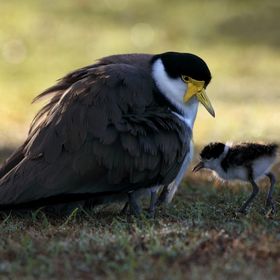

vivijo
FollowViews
450
Likes
Awards
Featured
Categories
Same photographer See allBehind The Lens
Discover more photos See all
Behind The Lens
Location
I took this photo on Bellingen Island, a lowland sub-tropical rainforest remnant in the centre of Bellingen town. It contains a permanent camp of Flying-foxes, or, Fruit Bats in its beautiful trees.Time
Early morning light was important. The sun needs to be low in the sky. Because the animals are high above there's a problem if the sun is directly behind them - you need to have them lit from the side as much as possible. Unfortunately close to dawn or sunset are not good times because the animals have their best sleep when they return from their night time foraging, or just before they go out in the evening.Lighting
Lighting is a big problem in the day time, with the animals being high above so they often have strong back lighting. Also light may be low because the animals are in forest. Therefore it's a great advantage to find a way to be close to level with the animals, so I look for slopes with animals in trees growing lower down the slope, and look specially for places where there is a clearing letting light onto the animals. Also, as in this picture, I look for animals with trees behind them rather than sky which increases light problems. But most important of all, I almost always use flash to fill in shaded areas. Otherwise faces will almost always be plain black. I think many people do not notice that a flash has been used. It's best to find a clear view of the animals because any leaves close to the camera will be bleached out by the flash, which is ugly.Equipment
I use Canon cameras usually EOS 5D range with a 100 - 400 Canon lens and Canon flash. I do not use a tripod because it is cumbersome when I need to climb through undergrowth and also it is hot and humid so I carry as little as possible. If I use a tripod it has to be very tall because I will point the camera upwards at a steep angle. Tripods are not designed for easy use at this angle. Also, I need to look around amongst the animals, to catch behaviours, so cannot afford to be slowed by the tripod.Inspiration
For more than twenty years I specialized in photographing Grey-headed Flying-foxes, spending many hours every week with them in their daytime camp as well as elsewhere at night. My aim was to photograph as many of their activities as possible. With this particular photograph I was attracted by the sweetness of the youngster's face and the nice placement of the three animals on the branch. These animals are endangered and are widely misunderstood perhaps partly due to Hollywood portrayal of bats so I see it as important to show people that they are lovable animals while pointing out that they are essential to the health of Australian forests.Editing
Yes, I always need to crop because to catch particular behaviour I need to shoot quickly with little time for composing. Also with this picture I will have tweaked contrast and maybe colour (can't remember). Maybe with more skill or use of a tripod I could avoid this necessity.In my camera bag
I carry only the camera with long lens and with flash attached plus a note book in my pocket. Carrying a bag would catch in the undergrowth.Feedback
You need to get to know the animals. It's an advantage if you can predict what they will do before they do it, and if you know the time of day when they will be most interesting. Also you need to know the area where the animals are found - finding good vantage points is of prime importance, and also it's important to know where the best animals are found. I think a long lens and a flash are essential most of the time. Without them your choice of possible shots is limited.











































